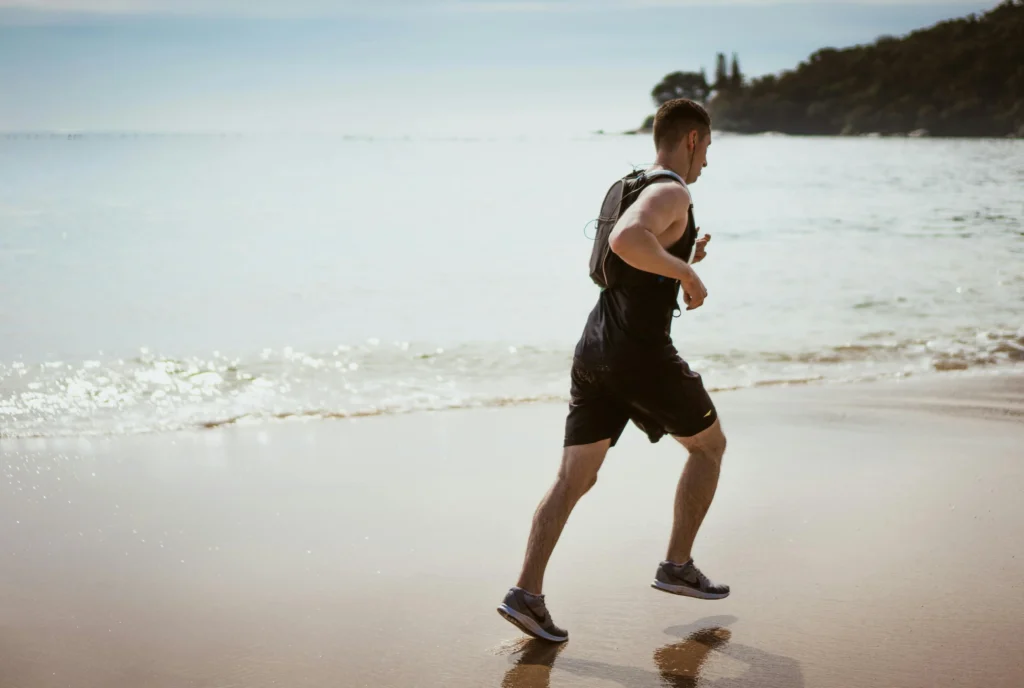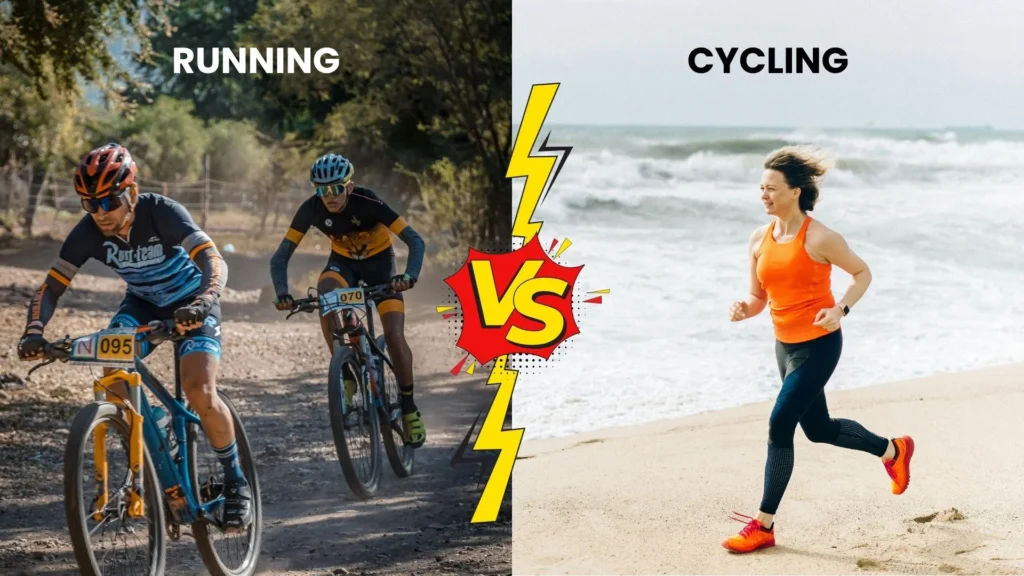Cycling vs Running: Introduction
Struggling to choose between cycling and running to shrink your waistline? Belly fat isn’t just a style concern—it’s a health hazard linked to heart disease and diabetes. Both cycling and running are cardio champs that torch calories and boost fitness, but which one comes out on top for fat loss and overall health? In this head-to-head comparison, we’ll break down the science, benefits, and practical tips to help you decide which exercise—or combination—fits your goals and lifestyle in 2025.
Why Focus on Belly Fat?
Before diving into the cycling vs running debate, let’s talk about why belly fat matters. Visceral fat, the kind that hugs your organs, increases risks for serious conditions like cardiovascular disease by up to 20%, according to a 2024 The Lancet study. Shedding it requires a calorie deficit—burning more calories than you consume. Cycling and running are two of the most effective, accessible ways to achieve this, but they work differently. Let’s explore how each stacks up.
Cycling: The Low-Impact Powerhouse
Cycling, whether on a road bike, stationary cycle, or scenic trail, is a low-impact favorite that delivers big results. It’s approachable, fun, and kind to your body, making it a go-to for many.

Heart Health Benefits
“Cycling increases heart rate, which enhances oxygen supply and blood flow. It’s a fantastic way to boost cardiovascular health and manage cholesterol,” says Dr. Priya Sharma, a sports medicine expert. A 2024 Medicina study found that cycling 30 minutes, five days a week, raised HDL (good) cholesterol by 10% and lowered LDL (bad) cholesterol and triglycerides, reducing heart disease risk.
Calorie-Burning Potential
How much fat can cycling melt? A 2024 study by Harvard Medical School revealed that a person weighing around 75 kilograms can burn between 400 and 600 calories in an hour by cycling at a moderate pace of 12–14 mph. Push the intensity with uphill climbs or interval sprints, and that number can soar past 700 calories per hour. Paired with a healthy diet, this makes cycling a solid choice for fat loss.
Muscle and Strength Gains
Your lower body is toned by cycling, which targets your calves, hamstrings, glutes, and quadriceps. Fitness experts claims that riding uphill or using more resistance increases muscle engagement. This builds strong, defined legs without the joint stress of high-impact workouts, ideal for those seeking toned muscles.
Joint-Friendly Advantage
Unlike pounding the pavement, cycling is gentle on your knees and ankles. A 2023 Medicine and Science in Sports and Exercise study reported 30% less knee pain among cyclists compared to runners, making it perfect for beginners, overweight individuals, or those with joint issues.
Running: The High-Intensity Fat Burner
Running is the ultimate grab-and-go workout—no equipment needed beyond a good pair of shoes. Its intensity and full-body engagement make it a fat-burning beast.

Calorie-Torching Power
Running burns calories fast. A 75 kg person jogging at 6 mph burns 600–800 calories per hour, according to Healthline’s 2025 fitness charts. Add sprints or inclines, and you could exceed 1,000 calories. A 2024 Journal of Sports Medicine and Physical Fitness study showed that beginners running 5 km weekly for a year, combined with diet changes, significantly reduced body fat, including around the midsection.
Cardiovascular Boost
Running requires your heart and lungs to work harder and faster. “It rapidly improves aerobic capacity and strengthens your heart,” says Dr. Sharma. Studies show a 15% increase in lung function after 12 weeks of regular running, alongside better blood pressure and circulation.
Bone and Muscle Strength
As a weight-bearing exercise, running builds denser bones in your legs, hips, and spine. It also tones muscles across your body—calves, quads, hamstrings, and core all get a workout. “Sprints or hill runs maximize muscle activation,” notes Thakur, boosting metabolism and lean muscle mass.
Mental Health Lift
Running isn’t just physical—it’s a mood booster. A 2025 Journal of Psychology study found that running 30 minutes three times a week cut anxiety and depression symptoms by 25%. The endorphin-driven “runner’s high” makes it a great stress-buster.
Cycling vs Running: Head-to-Head Comparison
Which exercise wins for fat loss and overall health? A 2024 Medicine and Science in Sports and Exercise study found both cycling and running reduced body fat, including visceral fat, in overweight individuals after 12 weeks. Here’s how they compare across key factors.
Calorie Burn
Running edges out cycling in calories burned per minute—10–12 calories for a 75 kg person at 6 mph, vs 6–9 calories for moderate cycling. Running becomes more time-efficient for fat loss as a result. However, cycling’s lower impact allows longer sessions, potentially matching running’s calorie burn over time. For example, 60 minutes of running (700 calories) roughly equals 90 minutes of cycling (600–700 calories).
Cardiovascular Fitness
Running’s high intensity builds cardio endurance faster, with quicker heart rate spikes. Cycling, while effective, takes longer to achieve similar cardiovascular gains but allows for sustained effort, making it ideal for longer workouts.
Injury Risk
Running’s high-impact nature stresses knees and ankles, increasing risks like shin splints or joint pain. Cycling’s low-impact design is safer for beginners or those with extra weight, with a lower injury risk overall.
Muscle Engagement
Running activates your whole body, especially core and legs, for a balanced workout. Cycling focuses on lower-body strength, particularly quads and glutes, making it better for targeted leg sculpting.
Accessibility and Cost
Running wins for simplicity—just grab shoes and go. Cycling may require a bike or gym access, which can be a barrier, though stationary bikes are widely available. Both are cost-effective compared to gym memberships or specialized equipment.
How to Optimize Cycling and Running for Fat Loss
To maximize fat loss, consistency and technique matter. Here’s how to make the most of each exercise.
Cycling for Maximum Results
- Start Steady: Ride 30–60 minutes at a moderate pace (12–14 mph), 4–5 times weekly.
- Incorporate Intervals: Alternate 1 minute of fast pedaling with 2 minutes of slower pace for 5–8 cycles to spike calorie burn.
- Tackle Resistance: Use hills or increase bike resistance to build muscle and burn more calories.
- Stay Regular: In order to produce a calorie deficit, the CDC recommends 150–300 minutes of moderate cardio each week.
Running for Maximum Results
- Warm Up Well: Begin with a 5-minute walk and dynamic stretches to protect joints.
- Build Gradually: Run 20–40 minutes at a steady pace, 3–5 times weekly. Newbies can alternate running and walking.
- Add Sprints: Include 1–2 weekly sprint sessions (e.g., 30 seconds sprint, 90 seconds jog, repeat 6 times) for extra fat burn.
- Rest Smart: Take rest days to avoid overtraining and injuries like runner’s knee.
The Diet Factor
Neither exercise will banish belly fat without a calorie-controlled diet. Give priority to whole foods, such as veggies, lean meats, and healthy fats. A 2025 Nutrition Journal study showed that pairing cardio with a high-fiber, high-protein diet led to 25% more fat loss than exercise alone. To achieve sustainable weight loss over time, target a daily calorie deficit of 500 to 750 calories. This gradual approach supports consistent fat reduction without stressing your body.
Why Not Do Both? The Power of Cross-Training
Instead of picking one, combine cycling and running for a balanced, engaging routine. Cross-training makes sessions interesting, works different muscles, and lowers the risk of injury. Try this sample weekly plan:
- Monday: 45-minute moderate cycling
- Tuesday: 30-minute run with sprints
- Wednesday: Rest or light stretching
- Thursday: 60-minute cycling with resistance
- Friday: 20-minute steady run
- Saturday: 90-minute relaxed bike ride
- Sunday: Rest
This method helps you burn more calories, build strength efficiently, and stay motivated without hitting a wall.
Cycling vs Running: Which Should You Choose?

Your choice depends on your fitness level, goals, and preferences:
- Pick Cycling If: You’re new to exercise, have joint issues, or want a low-impact workout that builds leg strength. It’s great for longer sessions and beginners.
- Pick Running If: You want a high-intensity, full-body workout that burns calories fast and requires minimal gear.
- Combine Both If: You crave variety, want to target different muscles, and aim for a sustainable routine.
“Find what you enjoy most,” says Thakur. “Consistency is the key to long-term fat loss and health.”
Your Next Step to a Healthier You
Cycling and running are both phenomenal for torching fat and boosting health in 2025. Running offers a quicker calorie burn and full-body workout, while cycling is gentler and builds strong legs. The real secret? Pair your chosen exercise—or both—with a nutritious diet and consistent routine. Ready to transform your health? Grab your bike or shoes and start moving today.


